This week’s Sizzlin’ Summer Challenge is to visit a state park. A walk in the park, right? Especially because, according to the National Association of State Park Directors, our country has 6,624 state park units, 52 of which are in Vermont.
How did state parks come to be and why does Vermont have more parks than some more generously populated states? Fredrick Law Olmstead, both father and son, President Franklin Delano Roosevelt, the Civilian Conservation Corps and Vermonter Perry Merrill get the nod.
The state park movement began in the mid-19th century, thanks to Fredrick Law Olmstead Sr., a true visionary and our country’s most revered landscape architect. Convinced that scenic preservation and mass accessibility to parks was vital for everyone’s well-being and society as a whole, he advocated tirelessly to persuade the public and those in power. “It is a scientific fact,” he asserted, “that the occasional contemplation of natural scenes of an impressive character, particularly if this contemplation occurs in connection with relief from ordinary cares, change of air and change of habits, is favorable to the health and vigor of men… beyond any other conditions that can be offered them.” Government, he said had nothing less than a duty to assure that “enjoyment of the choicest natural scenes in the country and the means of recreation associated with them” be “laid open to the use of the body of the people,” because if government did not act, those places would be experienced only by the elite.
Charged with managing NY City’s Central Park’s design, Olmstead then traveled to the Yosemite Valley, where he outlined a plan for minimal development that would allow for what he perceived would be eventually millions of visitors to the valley. How right he was.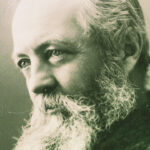
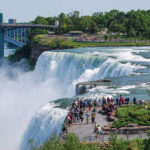 Returning East in 1865, he became invested in fighting for the preservation of Niagara Falls from commercialization. Thanks to his resolute commitment, in 1885, Niagara Falls become the nation’s first state park. Following in his dad’s footsteps, Fredrick Law Olmstead, Jr, was contracted by the state of California to identify the best locations for state parks, the majority of which are in operation today.
Returning East in 1865, he became invested in fighting for the preservation of Niagara Falls from commercialization. Thanks to his resolute commitment, in 1885, Niagara Falls become the nation’s first state park. Following in his dad’s footsteps, Fredrick Law Olmstead, Jr, was contracted by the state of California to identify the best locations for state parks, the majority of which are in operation today.
We owe an incredible amount of gratitude to the Civilian Conservation Corps for the impact they had on expanding our country’s state parks in record time. When I think about how President Franklin Delano Roosevelt’s brainchild to get our country back to work and out of economic depression, resulted in the creation of 800 state parks across our nation and half of Vermont’s state parks, I choke up. Though the majority of the CCC have now passed on, their legacy is ever present. For $30 a month, $25 of which had to be sent home for use by family members to jump-start the local economies, men hauled stone, built roads and bridges, created swimming areas, picnic shelters, campgrounds and trails.
Lastly, thanks to the foresight and advocacy of Perry Merrill, a Vermont state forester, our state landed the big kahuna. With several shovel-ready projects waiting in the wings; when Roosevelt said “go”, Merrill convinced leadership that Vermont needed 30 CCC camps rather than the four originally allocated. Between 1933 and 1942, an astounding 40,868 individuals worked in Vermont’s CCC camps. Waterbury’s Little River State Park housed the largest camp in the East, 80 buildings strong.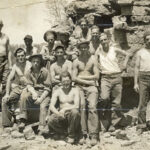
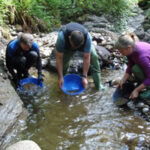 Back to the challenge at hand –if my enlightening historical review has not motivated you to drop everything and dash to a state park, perhaps the following teasers will do the trick. Did you know there are state parks where one can hang glide, go geocaching, pan for gold or rock climb? Or that a few parks now offer bare bones cabins built specifically with baby boomers in mind? Or in celebration of the Vermont’s Arts Council 50th anniversary, artists are creating art in several parks as part of an exhibit designed to encourage dialogue around Vermont landscape issues? Or that Niquette Bay State Park has created a poetry walk? There’s plenty to discover and help with your planning online at www.vtstateparks.com.
Back to the challenge at hand –if my enlightening historical review has not motivated you to drop everything and dash to a state park, perhaps the following teasers will do the trick. Did you know there are state parks where one can hang glide, go geocaching, pan for gold or rock climb? Or that a few parks now offer bare bones cabins built specifically with baby boomers in mind? Or in celebration of the Vermont’s Arts Council 50th anniversary, artists are creating art in several parks as part of an exhibit designed to encourage dialogue around Vermont landscape issues? Or that Niquette Bay State Park has created a poetry walk? There’s plenty to discover and help with your planning online at www.vtstateparks.com.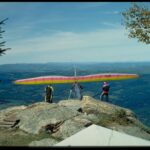
Finally, consider the following: Vermont libraries have free day use park passes, individuals 62 and older can purchase a Green Mountain Passport from a town clerk for two dollars guaranteeing free day use for life and over 130 Vermont physicians are prescribing day use passes to patients this summer, thanks to a generous collaboration between the parks and the Governor’s Council on Physical Fitness and Sports.
Go find a state park. Shout out your “thank yous” to the Olmsteads, the CCC and to Perry Merrill. Their determination and labor gave our country the best gift one can ever unwrap.
See you on the PATH Ahead,
Shevonne, Gillian, Amy and the VEHI PATH Team.